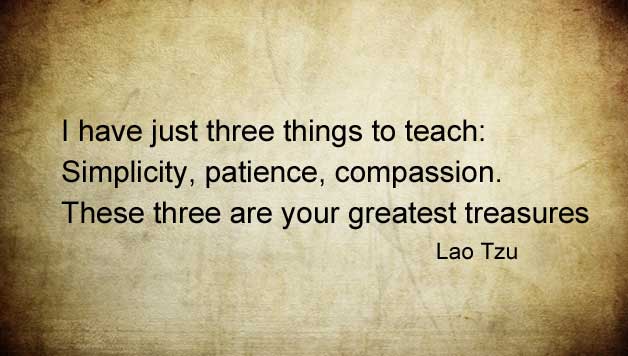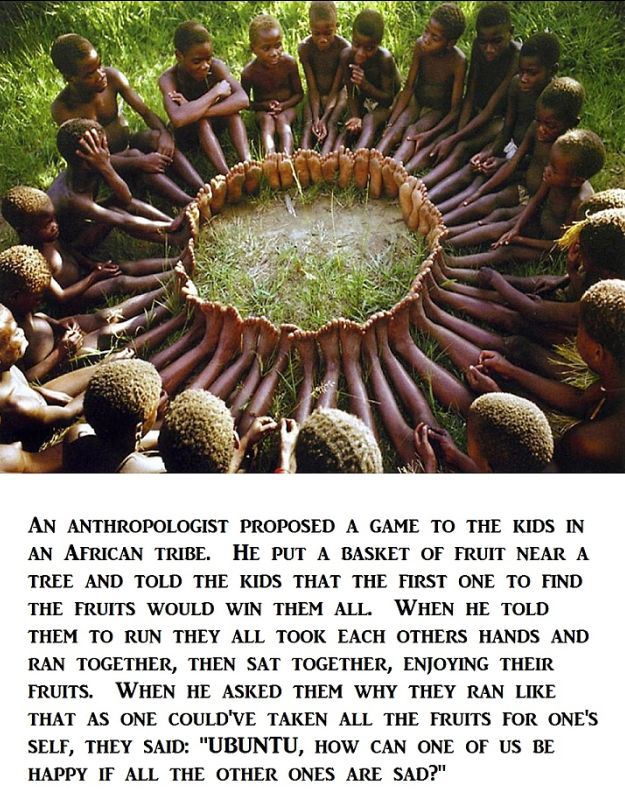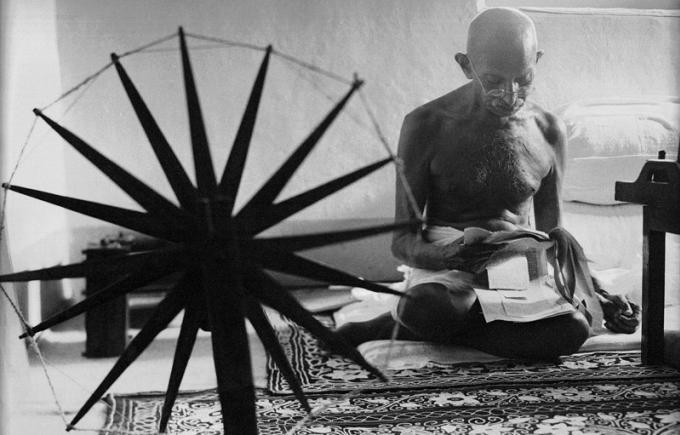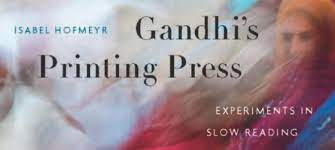- Details
- Written by: Kamran Mofid
- Hits: 10404

Photo: youtube.com
"How can we see ourselves and our true purpose/talents if we are constantly viewing others?"… "Many of us are in so deep we don't realize [social media's] delusional powers and the impact it has on our lives."
“From fashion bloggers to fitness experts to simply photogenic everyday citizens, the "Instagram celebrity" has emerged as a new branch of fame in our social media-run world. Essena O'Neill, an 18-year-old from Australia, was a regular teen who amassed half a million followers on Instagram (on top of 200,000 followers on YouTube and Tumblr and 60,000 on her Snapchat, all now inactive) with selfies, outfit posts, and #fitspo photos. After building that up, she decided last week that she was done with social media.
She deleted 2000 photos, renamed her account to "Social Media Is Not Real Life," and changed the captions on existing photos with truthful anecdotes about posts she was paid for, how many tries it took to get the shot, and the pressures she felt to look perfect.
"I've spent the majority of my teenage life being addicted to social media, social approval, social status, and my physical appearance, " O'Neill writes in her last Instagram post on October 27, "[Social media] is contrived images and edited clips ranked against each other. It's a system based on social approval, likes, validation, in views, success in followers. it's perfectly orchestrated self-absorbed judgement."…
Continue reading:
http://www.elle.com/culture/news/a31635/essena-oneill-instagram-social-media-is-not-real-life/
Watch the video: Why I think Social Media sucks- Essena O’Neill

Essena- the darling of the social media
Photo: Instagram
The Pressure of Fame
"Our need to connect, it's becoming more like a series of interactions rather than connecting from depth and connecting from the heart. The connections we make online can give us that warm glow, but we mustn't mistake that for true connection."-Dr Nerina Ramlakhan, Physiologist

A still from Essena O'Neill's YouTube video explaining why she's quitting social media-Photo: youtube.com
Why I think social media sucks on Vimeo
“Teens are so emotionally invested in social media that a fifth will wake up at night and log on”
A reflection from a young person
(June Eric Udorie, 16, is a student, blogger and feminist campaigner)
“The pressure to be perfect and always ‘on’ is overwhelming many of us.”

Photo: theguardian.com
“The digital landscape has put increased pressure on teenagers today, and we feel it. There are so many social media channels: Facebook, Twitter, Instagram, Snapchat, Tumblr, you name it. I made a conscious decision to avoid Snapchat and Instagram because of the social pressure I saw them putting on my 14-year-old little sister. If my mum turned off the WiFi at 11pm, my sister would beg me to turn my phone into a hotspot. She always needed to load her Snapchat stories one more time, or to reply to a message that had come in two minutes ago because she didn’t want her friend to feel ignored. If I refused, saying she could respond in the morning, I’d get the “You’re ruining my social life” speech. Even as a teenager as well, I sometimes find this craze a little baffling.
A new study has found that teenagers who engage with social media during the night could be damaging their sleep and increasing their risk of anxiety and depression. Teenagers spoke about the pressure they felt to make themselves available 24/7, and the resulting anxiety if they did not respond immediately to texts or posts. Teens are so emotionally invested in social media that a fifth of secondary school pupils will wake up at night and log on, just to make sure they don’t miss out.”…
Continue reading:
A Further Reflection on Social Media from an older person!
(Kamran Mofid)

Photo: gograph.com
Thank you Essena and June for what you have done and said. You speak for millions and millions of people, young and old. I, too, felt the same, and I am much older than you are. Please see below:
In December 2012 I posted a Blog, reflecting on my experience with Facebook and other social media under the title of “Is the Web Driving Us Mad?” Where I wrote:
“The other day, I “Successfully” de-activated my Facebook account. I say “Successfully”, because Facebook does not make it easy to say good bye, even though I was just trying a short-term separation and not a divorce! At least for now. {Since then, I have now permanently deleted myself from Facebook}.
You know, given human weaknesses to addiction, that is any form of addiction, I thought I was watching me and watching you to see if you were watching me, a bit too much: Watching who likes or dislikes whatever I post there. As if one click here or there is enough for me to know how good or bad I am doing!
My mind was going “digital” and I was becoming “virtual”: And I said to myself, Hey Kamran, watch where you are going man!
I thought I needed a time out, a time for some reflection and soul-searching. I do not know if you, too, are facing the same or not.”…
Continue reading:
See also:
Has loneliness become the new normal?
Has loneliness become the new normal?
Now instead of the harmful social media, allow me to offer you my heath-enhancing “Slow Reading Sunday"
Gems from my Wisdom Corner

“In an age of tech acceleration and the need to consume as much information as quickly as possible, “Slow Reading Sunday” is our journey back to wisdom. I believe in the wise words and sentiments of Mahatma Gandhi, when, well before the digital age of high-speed communication, just-in-time deliveries, social media and twittering, warned us against the pitfalls of living full throttle when he said, "there is more to life than increasing its speed"…
Continue reading: Journey to Healing: Let Me Know What is Essential
The Path to a Happy Life

A True Friendship- Real, Engaging and not "Virtual"

- Details
- Written by: Kamran Mofid
- Hits: 5205
“I went to the woods because I wished to live deliberately, to front only the essential facts of life, and see if I could not learn what it had to teach, and not, when I came to die, discover that I had not lived. I did not wish to live what was not life... I wanted to live so sturdily and so Spartan-like as to put to rout all that was not life... to drive life into a corner to know it by experience and be able to give an account of it in my next excursion.”―Henry David Thoreau
- Details
- Written by: Kamran Mofid
- Hits: 5752
Education Needs a Revolution: Values-led Slow Teaching and Reading
Gandhi and Slow Reading: A Look at Gandhi’s Philosophy of Reading

Gandhi’s practices of silence, slow reading, fasting, walking and spinning were integral to his self-search.
Photo: caravanmagazine.in
"There is more to life than increasing its speed"-Gandhi
Gandhi's Printing Press: Experiments in Slow Reading
Isabel Hofmeyr, Professor of African Literature, University of the Witwatersrand
Here Hofmeyr analyzes the act of slow, deliberate reading and thoughtful reflection that Gandhi cultivated and adopted as key conditions toward the realization of truth and self-rule.

“In our own frantic age, with online reading becoming ever more fragmentary, Gandhi’s ideas have deep resonances. As all aspects of life accelerate, we have to seek out the pauses that provide an opportunity for reflection and contemplation. Taking Gandhi’s advice, we can use reading itself as a mode of slowing down the agitated rhythms that drive contemporary life.”
“During his South African years (1893-1914), Mohandas Gandhi started a printing press and a newspaper, Indian Opinion. One of the world’s great intellectual archives, Indian Opinion constitutes an experiment with reading and writing that fed into Gandhi’s ideas on satyagraha or “passive resistance.”
Writing in an age of vertiginous acceleration via telegraph, train and steamship, Gandhi grappled with an industrializing information order in which readers were bombarded with ever more reading matter. In this context, Gandhi saw reading and writing as ways of managing the tempos of the industrial pressure. Such strategies questioned the relationship of speed with efficiency, a link that lay at the heart of satyagraha and its critiques of industrial modernity.
Gandhi’s ideas on reading and writing hence have much to say to our frantic, information-smothered lives. In a recent book, Gandhi’s Printing Press: Experiments in Slow Reading (Harvard University Press, 2013), I explored these themes of speed and sovereignty, satyagraha and reading.
Satyagraha and Reading
Satyagraha is generally understood as a political practice of non-violence, civil disobedience or non-co-operation. But it is equally a mode of building swaraj or “self-rule,” which for Gandhi meant literally that, namely, rule of the self. In his thinking, such self-rule or independence cannot be conferred on a person; it has to be built up painstakingly by each individual.
Satyagraha then is a practice of sovereignty rooted in the individual, rather than an abstraction like the nation state. As a concrete practice, satyagraha best inheres in activities which proceed at the pace of the body (like spinning and fasting) and which disrupt instrumental logic of means and ends. Through such practices, ethical values accrete in the individual and form the basis of self-rule, creating independence one person at a time.
Reading is of course a practice that can only proceed at the pace of the body. If we are to read thoughtfully, we cannot speed up the pace at which we read and we cannot outsource the activity to someone else. In a Gandhian world, reading could become one way of pausing industrial speed to create small moments of intellectual independence. Reading may happen within the world of industrial time, but didn’t need to be entirely driven by its logics. This focus on bodily rhythm as a way of interrupting industrial tempos became central to his world-famous critiques of modernity, which questioned the equation of speed with efficiency and technology with progress.
Gandhi’s Printing Press and Indian Opinion
One of Gandhi’s first experiments with these ideas utilized a printing press and a newspaper set up in Durban, an Indian Ocean port city in the colony of Natal (in present day South Africa). The International Printing Press (IPP) of which Gandhi was the sometime proprietor was established in 1898, initially as a jobbing press to serve the Indian community in Natal. In 1903, the IPP began printing the newspaper Indian Opinion. The paper appeared weekly and was initially printed in four languages (English, Gujarati, Hindi and Tamil), although the latter two soon fell away.
Before long the paper and the press experienced major financial difficulty, and in early October 1904 Gandhi (then based in Johannesburg) took the overnight train to Durban to investigate. Famously, his friend Henry Polak gave him a copy of Ruskin’s Unto this Last, a book that persuaded Gandhi to establish his first ashram, Phoenix, 14 miles north of Durban. By December 1904, the paper and press has been moved to Phoenix where both played an important role in dramatizing the new kind of community that Gandhi sought to build as different religion, caste groups, races and genders interacted in Phoenix and the press itself.
The paper appeared weekly and functioned as a key component in Gandhi’s campaigns in South Africa. In terms of circulation figures, these ranged (according to Gandhi’s estimates) from 800 to 3,500, with an average of 1,200 to 1,500 (as well as a secondary readership of borrowers and non-literates).
Slow Reading
In these printing and newspaper operations, Gandhi sought to propagate practices of slow reading and writing. He favored hand-printing wherever possible and, as the newspaper continued, he scaled back on advertisements with a view to withdrawing the paper from the dictates of the market.
Gandhi (ever an alchemist of the ordinary) took the basic elements of the newspaper, designed to promote hasty reading and sought to turn them against themselves. With its telegraphic headlines and ever-briefer genres, the periodical format aimed to speed up reading. Gandhi regarded such modes of reading as dangerous, and as capable of “macadamizing” the mind (a phrase he took from Thoreau). Instead he sought to turn these structures of haste to different ends. Rather than regarding the breaks in a newspaper as a pretext for hastening ahead, they could as well function as pauses, moments of contemplation to think about what one had read.
Since the newspaper was made up of bits and pieces (often taken from other periodicals, in keeping with the practices of the time), one could juxtapose different kinds of material. In the columns of Indian Opinion one frequently encounters ethical and philosophical extracts among reports on current events. Such juxtapositions encouraged readers to read news at the pace of philosophy and vice versa.
Gandhi gave extensive instructions to readers on how best to read. He urged attentive and careful reading and rereading. He suggested that readers keep copies of the paper and also write out and memorize selections from the newspaper, so they could return again to these passages.
His great manifesto Hind Swaraj (written in 1909 as he returned by ship from England to South Africa) is as much a treatise on reading as it is on ideas of how to deal with colonial rule. The book first appeared in two parts in the Gujarati section of Indian Opinion before being produced as a booklet in an English translation by Gandhi himself.
The book takes the form of a dialogue between a Reader and an Editor in which the latter tries to train the former to read slowly and carefully, to digest ideas before rushing ahead to hasty conclusions. The point of the dialogue is to shift the Reader from being an intemperate hothead to a considered and thoughtful individual. One recurrent method that the Editor uses is to make the Reader return to, and reconsider, ideas that are initially pooh-poohed. The book hence enacts a methodology of reading that Gandhi first experimented with in Indian Opinion.
The book has largely been interpreted as Gandhi’s dialogue with the revolutionary, extremist Indians who favored violence as the most effective anti-colonial strategy. But the text can equally be seen as a book that exemplified Gandhi’s key ideas about reading and its relationship to satyagraha. The book urges patience and slowness as a way of building up one’s own interior independence rather than trusting this will be created on one’s behalf by an anti-colonial movement. The methods of reading the text espouses mirror these themes.
In our own frantic age, with online reading becoming ever more fragmentary, Gandhi’s ideas have deep resonances. As all aspects of life accelerate, we have to seek out the pauses that provide an opportunity for reflection and contemplation. Taking Gandhi’s advice, we can use reading itself as a mode of slowing down the agitated rhythms that drive contemporary life.”
About the Author
Isabel Hofmeyr is Professor of African Literature at the University of the Witwatersrand in South Africa. After her initial work in African Studies, she has turned to transnational topics, some of these focusing on Indian Ocean themes. She has published widely in this latter area and recently completed a book Gandhi’s Printing Press Experiments in Slow Reading (Harvard University Press, 2013). In its review of Gandhi’s Printing Press, Publishers Weekly wrote, “This thoughtful account is a compelling preview of the colonial subcontinent’s development, as well as Gandhi’s eventual role as peaceful emancipator of his own country.”
See the original article:
Slow Reading the News: Gandhi’s Philosophical Experiments with His South African Newspaper | Readex
Purchase Gandhi’s Printing Press:
Gandhi’s Printing Press — Isabel Hofmeyr | Harvard University Press
